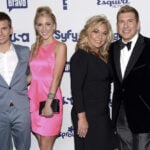The rampant increase of hate messages on social media is a scourge in today’s technology-infused society. Racism, homophobia, xenophobia and even personal attacks on people who have the audacity to disagree with someone else’s political opinion – these and other forms of online hate present an ugly side of humanity.
The derision on social media appears in vile and profane terms for all to see. Obviously, the sole purpose of posting online hate is to harass and harm one’s victims, right?
Not necessarily, according to recent studies about hate messaging in social media. Although seeing hate comments is unquestionably upsetting, new research suggests there’s a different reason people post hate: to get attention and garner social approval from like-minded social media users. It’s a social activity. It’s exhilarating to be the nastiest or snarkiest and to get lots of thumbs-ups or hearts. Anecdotal evidence makes a good case for the social basis of online hate, and new empirical research backs it up.
In over 30 years of research about online interaction, I’ve documented how people make friends and form relationships online. It now appears that the same dynamics that can make some online relationships intensely positive can also fuel friendly feelings among those who join together online in expressing enmity toward identity groups and individual targets. It’s a “hate party,” more or less.
Online hate is a social phenomenon
When you look at online hate messages, you start to notice clues that suggest, more often than not, that hatemongers are posting messages to each other, not to those their messages implicate and denigrate.
For instance, white supremacists and neo-Nazis often include codes and symbols that have shared meaning for the in-group but are opaque to outsiders, including the very people that their messages vilify. Including “88” in one’s message, hashtag or handle is one such code; the Anti-Defamation League’s lexicon of hate symbols explains that the 8th letter of the alphabet is H. And 88, therefore, is HH, or Heil Hitler.
Another clue that hate is for haters is the way it has shifted somewhat from mainstream social media to fringe sites that have gotten so hateful and disturbing that it’s hard to imagine any member of a targeted group wanting to peruse those spaces. The fringe sites say they promote unfettered free speech online. But in doing so, they attract users who write posts that are widely unacceptable and wouldn’t last a minute on mainstream sites with community standards and content moderation.
The kinds of messages that would quickly be flagged as hate speech in any offline setting come to dominate the threads and discussions in some of these spaces. Users curate meme repositories – for instance, the anti-Jewish, anti-LGBTQ and “new (n-word)” collections – that are hideous to most people but funny to those who partake in these secluded virtual backrooms. They’re not spaces where the targets of these epithets are likely to wander.
Ganging up builds community
Further research lends credence to the hypothesis that haters are in it for social approval from one another. Internet researchers Gianluca Stringhini, Jeremy Blackburn and their colleagues have been tracking what they call cross-platform “raids” for a decade.
Here’s how it works. A user on one platform recruits other users to target and harass someone on another platform – the creator of a specific video over on YouTube, for instance. The originator’s post contains a link to the YouTube video and a description of some race or gender issue to prey on, instilling the urge to act among prospective accomplices. Followers head to YouTube and pile on, filling the comments section with hate messages.
The attack looks like its purpose is to antagonize a victim rather than building ties among the antagonists. And, of course, the effects on the targeted person can be devastating.

But backstage, the attackers circle back to the platform where the plot was organized. They boast to one another about what they did. They post screen grabs from the YouTube page to show off their denigrating deeds. They congratulate each other. It was for getting attention and approval after all, consistent with the social approval theory of online hate.
Social approval eggs users on to greater extremes
More direct evidence of the effect of social approval on hate messaging is also emerging. Online behavior researcher Yotam Shmargad and his collaborators have studied newspapers’ online discussion websites. When people get “upvotes” on antisocial comments they’ve posted, they become more likely to post additional antisocial comments.
A recent study by my colleagues Julie Jiang, Luca Luceri and Emilio Ferrara looked at users of X, the platform formerly known as Twitter, and what happened when they received signs of social approval to their xenophobic tweets. When posters’ toxic tweets got an unusually high number of “likes” from other users, their subsequent messages were even more toxic. The more their messages were retweeted by others, the more posters doubled down with more extreme hate.
These findings do nothing to diminish the real hurt and anger that justifiably arise when people see themselves or their identity groups disparaged online.
The social approval theory of online hate doesn’t explain how people come to hate others or become bigoted in the first place. It does provide a new account for the expression of hate on social media, though, and how social gratifications encourage the ebb and flow of this problematic practice.

Joseph B. Walther receives funding from the Institute for Rebooting Social Media, Berkman Klein Center for Internet & Society at Harvard University, and donations for online hate research and the Center for Information Technology and Society at the University of California, Santa Barbara.
Source: The Conversation

 Queen Elizabeth II wasn't told about Soviet spy in her palace, declassified MI5 files show
Queen Elizabeth II wasn't told about Soviet spy in her palace, declassified MI5 files show
 Traffic into Manhattan drops 7.5% in first week of new toll. That's 43,000 fewer cars a day
Traffic into Manhattan drops 7.5% in first week of new toll. That's 43,000 fewer cars a day
 Court papers say ex-NBA player Jontay Porter laid out betting scheme in a text; 6th person arrested
Court papers say ex-NBA player Jontay Porter laid out betting scheme in a text; 6th person arrested
 Canada ready to buy more American products to appease Trump's tariff threat, ambassador says
Canada ready to buy more American products to appease Trump's tariff threat, ambassador says
 No let up from dollar, US yield squeeze
No let up from dollar, US yield squeeze
 Small airborne embers play a big role in the spread of wildfires
Small airborne embers play a big role in the spread of wildfires
 Reality TV star Chase Chrisley didn’t assault anyone at Atlanta bar despite arrest, his rep says
Reality TV star Chase Chrisley didn’t assault anyone at Atlanta bar despite arrest, his rep says
 Posting a hateful message online can have a lot to do with how like-minded bigots will respond.
Posting a hateful message online can have a lot to do with how like-minded bigots will respond.







